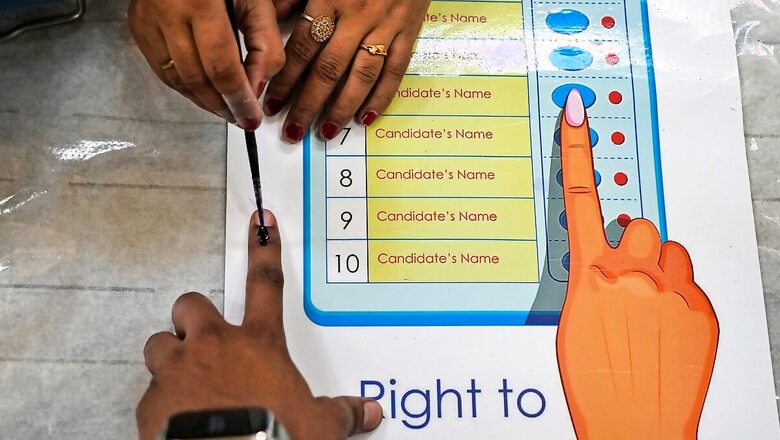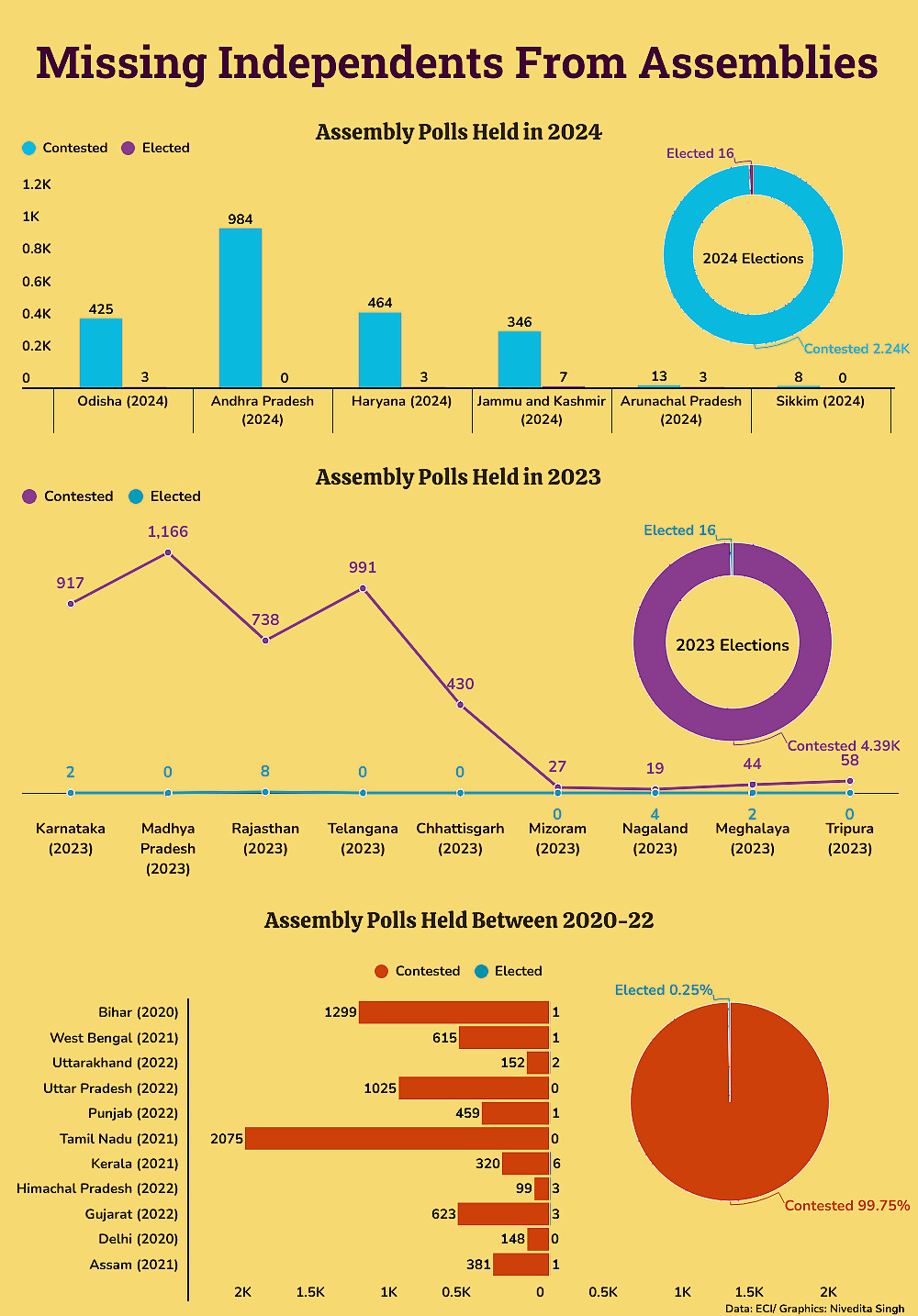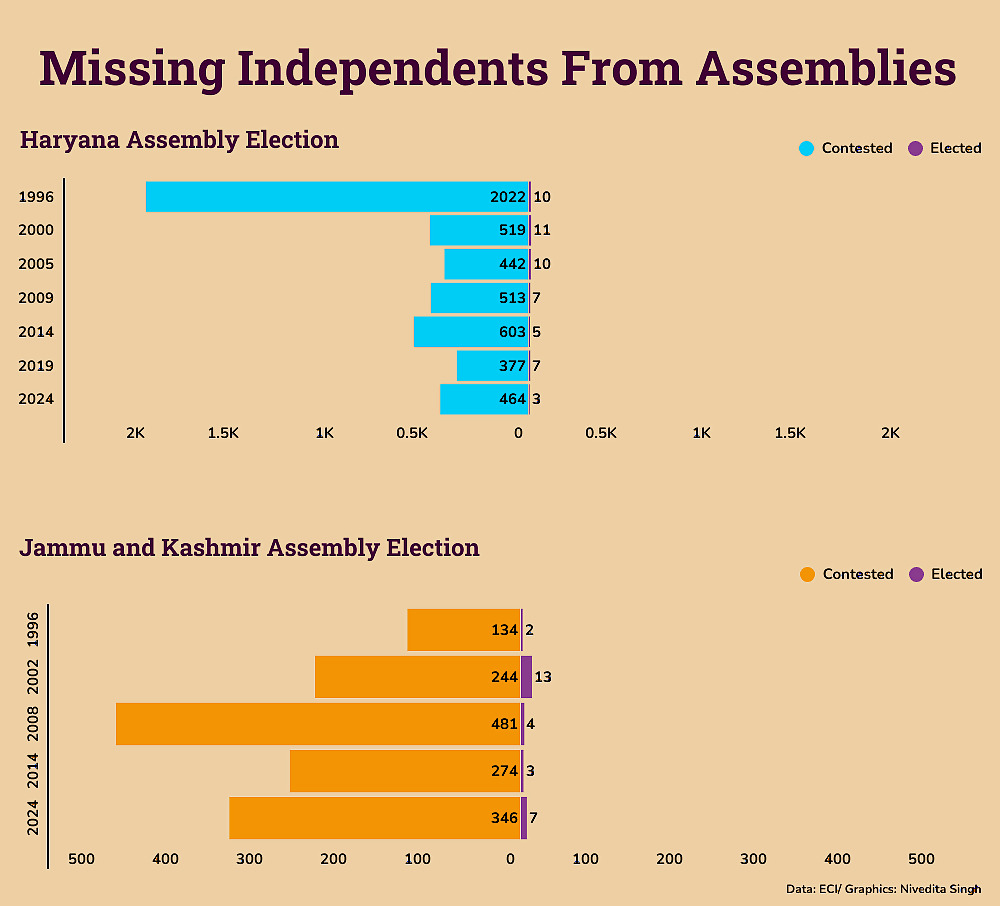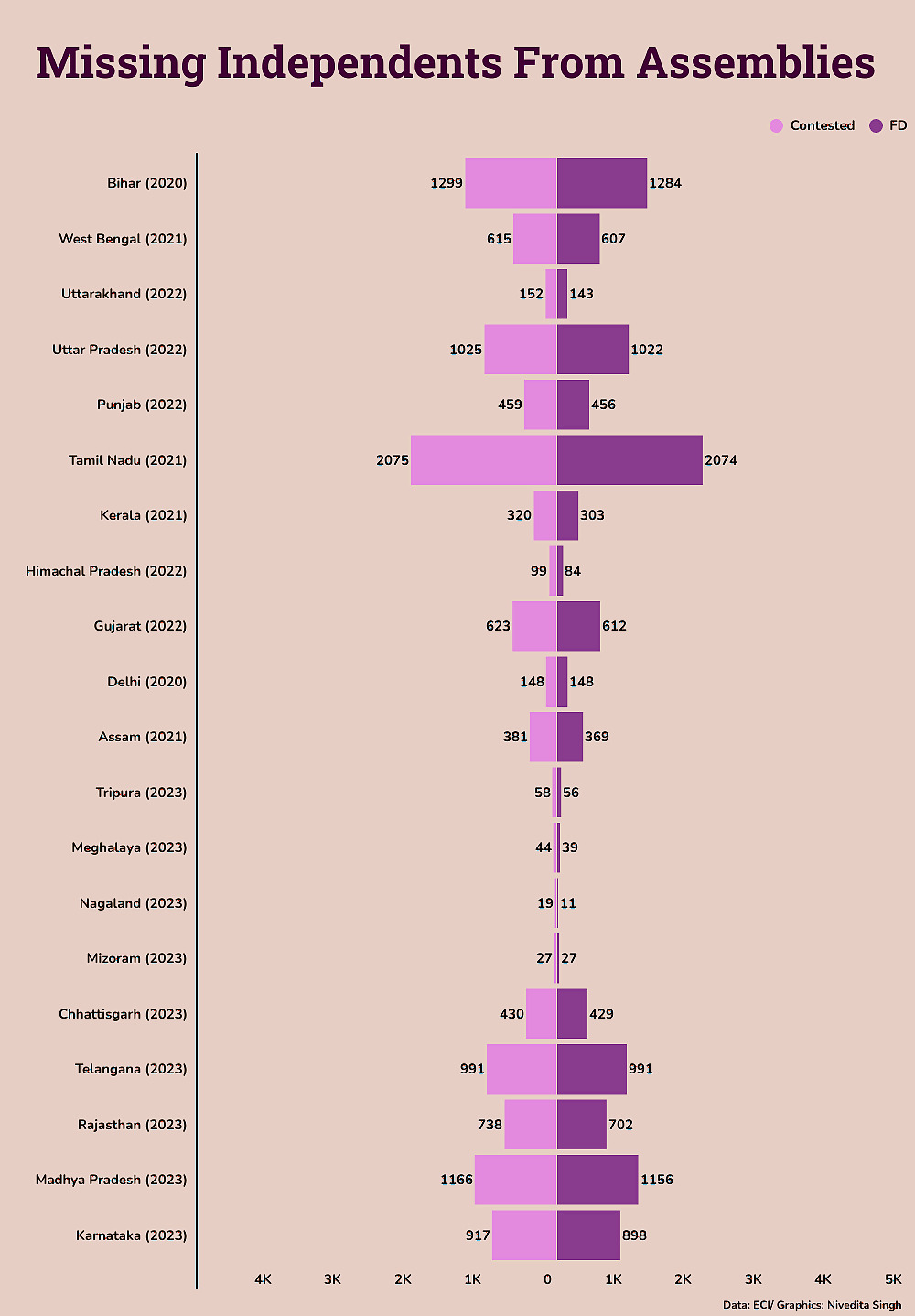
views
Not just Haryana but assembly elections held across India in the last few years saw either only a few Independent MLAs or none at all.
To understand the situation of Independent candidates, News18 analysed the assembly polls held across India between 2020 and 2024. This year, among the five states and one Union Territory that went for assembly polls, only Jammu and Kashmir had more than five Independents elected to its assembly — at seven. Three each were elected to Odisha, Arunachal Pradesh and Haryana assemblies.
In total, at least 2,240 Independent candidates tried their luck in the six assembly polls held this year, including Haryana and Jammu and Kashmir, and only 16 made it to the House, including seven from the UT.
In several elections in the past across the country, Independent candidates have played a crucial role and even turnout to be the kingmakers. However, with the public issuing clearer mandates in almost all the elections, polls have majorly become a two-party system.



Across India, 29 assembly elections were held between 2020 and 2024. In the calculation, only Maharashtra and Jharkhand elections, held last in 2019, were not considered. A total of 14,040 Independent candidates contested the assembly polls and only 62 made it to the House. A total of 11,599 candidates lost their deposit.
Candidates who fail to secure 1/6th of the total eligible votes polled forfeit the deposit (FD) submitted at the time of filing of the nomination papers to the returning officer. For assembly elections, the security deposit is Rs 10,000 for general candidates and Rs 5,000 for those from the reserved categories.
Of the 29 elections, across 10 states, none of the elected MLAs were Independents. The list included Delhi, Andhra Pradesh, Chhattisgarh, Madhya Pradesh, Mizoram, Sikkim, Tamil Nadu, Telangana, Tripura and Uttar Pradesh. In at least 19 assembly polls, at least one or more Independent candidates were elected.
In Assam, Bihar, Punjab and West Bengal, just one Independent MLA each was elected. Only four states/UT — Rajasthan (eight), Jammu and Kashmir (seven), Kerala (six) and Puducherry (six) — have elected more than five Independent MLAs in the last assembly polls they witnessed.
In the 40-member Goa assembly and 60-member Manipur, three Independent MLAs were elected when the states went for polls in 2022.
This week, elections to the assemblies of Haryana and Jammu and Kashmir completed.
The three Independents elected to Haryana was the lowest in the history of the state in at least the last three decades. Three elections were held in the state between 1996 and 2005, and in each of these the Independent MLAs were in double digits.
On the other hand, in Jammu and Kashmir, the number of Independent candidates elected to the House is the second-best in the last three decades and exceptionally high when compared to the past. In 2002, the erstwhile state elected 13 independent MLAs — highest in the last three decades from 1996. Seven elected in 2024 were the UT’s second-best record. The UT witnessed five assembly polls between 1996 and 2024, and thrice the Independent MLAs elected were less than five.
Soon, Maharashtra and Jharkhand will go for polls and the fate of the Independents in those assemblies will be decided by the public.
Why Do Independents Fail?
Unless a big name or a leader who actually works on the ground is contesting as an Independent, people usually shy away from electing them as they may not be able to meet the public demands.
Also, in most cases, the Independent candidates either end up supporting the ruling party or join it later — just like in Haryana this time. Hence, the voters, who rejected the ruling party on that seat, feel cheated.
Further, for almost 90 per cent of Independent candidates, their campaigns are not as widespread and powerful as others due to limitations of money and manpower. This is why, most of the time, the voters actually don’t have much idea about the Independents in the fray.




















Comments
0 comment